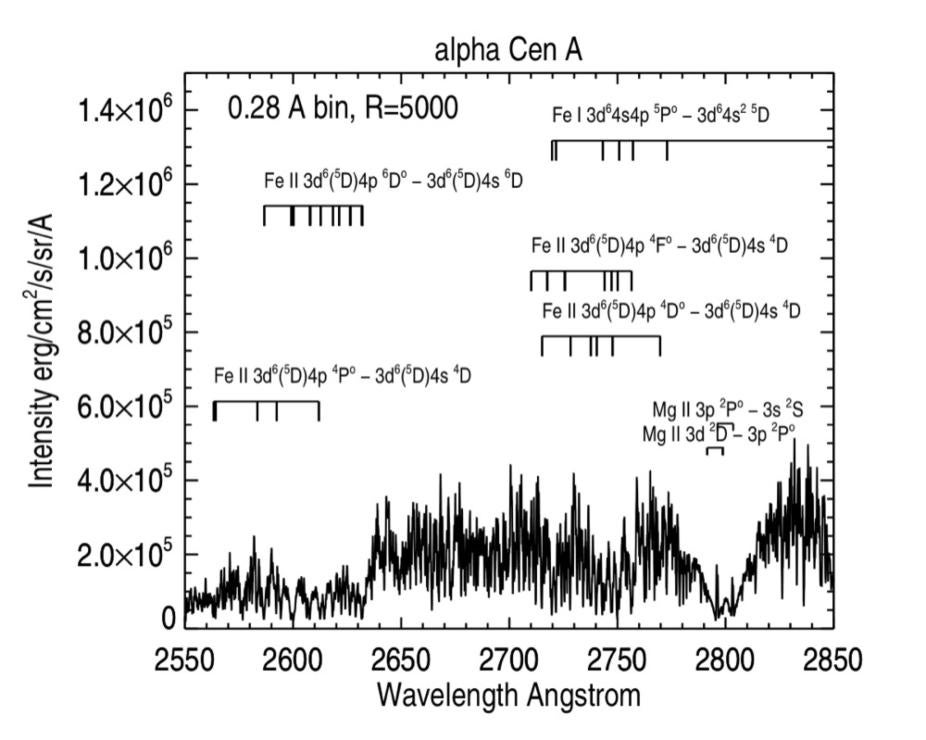Publication: ApJ; First HAO Author: Philip Judge
We take a broad look at the problem of identifying the magnetic solar causes of space weather. The challenges are best met through a combination of near UV lines of bright Mg II, and lines of Fe II and Fe I (mostly within the 4s − 4p transition array) which form in the chromosphere up to 20,000 K. Both Hanle and Zeeman effects can in principle be used to derive vector magnetic fields. However, for any given spectral line the τ = 1 surfaces are generally geometrically corrugated owing to fine structure such as fibrils and spicules.

A smoothed UV spectrum of α alpha Cen A, obtained by the Hubble Space Telescope, is displayed as a proxy for the mean solar intensity spectrum. The large number of lines of Fe I and Fe II are indicated and annotated with their mul- tiplet terms. The Mg II spectrum is also annotated including the 3s − 3p h and k lines, and the 3p − 3d lines.
By using multiple spectral lines spanning different optical depths, magnetic fields across nearly-horizontal surfaces can be inferred in regions of low plasma β, from which free energies, magnetic topology and other quantities can be derived.